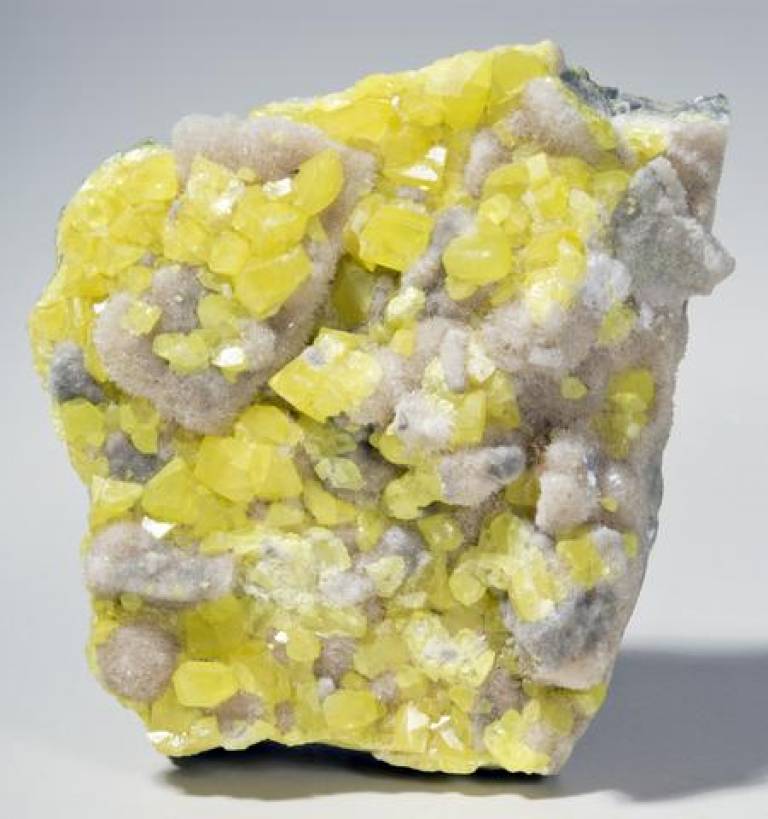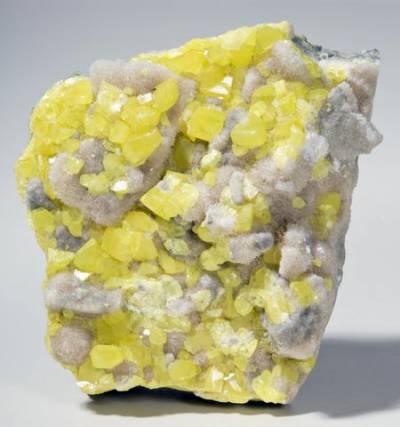Brimstone
3 March 2014

The yellow crystals in this geological sample are nuggets of pure sulphur - or brimstone, as it is known to the more biblically minded.
Sulphur is a widely-used element, entering into many crucial products of the chemical industry, including pesticides and fertilisers. Elemental, or native, sulphur was a major historic source of this substance, but it has long since been replaced. Sulphur compounds such as pyrite (iron sulphide, or 'fool's gold') are more widespread and easier to extract, meaning samples like this are now just curiosities for geologists, rather than major economic resources.
More recently, natural gas and oil have become the main sources of sulphur for the chemical industry. These contain compounds such as hydrogen sulphide which, when the fuel is burned, can form sulphuric acid. In an attempt to reduce acid rain, which damages forests and water-borne life, these are now extracted from fossil fuels during the refining process, providing sulphur as a useful byproduct for industry.
Photo credit: UCL Geology Collections
Links
High resolution image
This image can be reproduced freely providing the source is credited
 Close
Close





